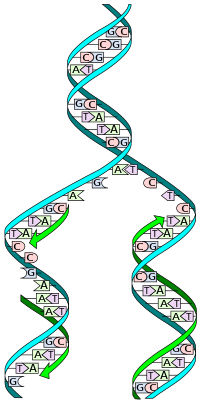
Photo from wikipedia
DNAreplicationduringthesynthesis(S-)phaseofthecellcycleisakey step in cell proliferation. DNA replication fidelity and cell cycle checkpoints ensure that transient DNA damage is not converted into stable mutations.Thesedirectlinkstocellproliferationandmutationalavoid-ancemakeDNAreplicationcheckpointsimportanttogenomestability. He and Zhang’s Hypothesis explores how DNA… Click to show full abstract
DNAreplicationduringthesynthesis(S-)phaseofthecellcycleisakey step in cell proliferation. DNA replication fidelity and cell cycle checkpoints ensure that transient DNA damage is not converted into stable mutations.Thesedirectlinkstocellproliferationandmutationalavoid-ancemakeDNAreplicationcheckpointsimportanttogenomestability. He and Zhang’s Hypothesis explores how DNA replication complexes are maintained during replication instability and in an unstressed S-phase. 1 Replication forks are the functional unit of DNA replication, with three main activities: synthesis by leading and lagging strand poly-merases; unwinding double stranded DNA into single stranded tem-plate by DNA helicase components; and, stabilizing synthesis and unwinding through a fork protection complex. Functional differences between leading and lagging strands have been characterized using
Journal Title: BioEssays
Year Published: 2022
Link to full text (if available)
Share on Social Media: Sign Up to like & get
recommendations!